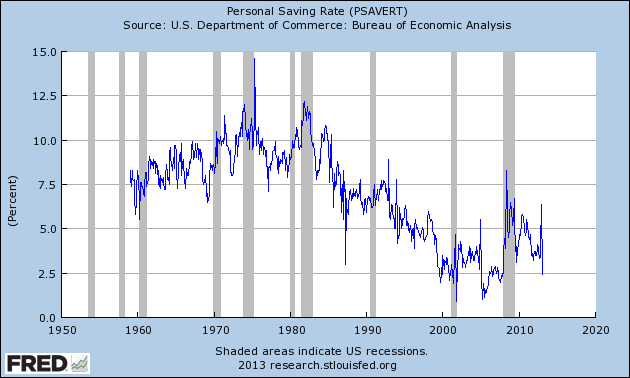Whenever I see a headline that reads similar to “How to Invest in Uncertain Times” I shake my head. I shake my head because the headline implies there is a time when the outlook is certain.
The reality is all times are uncertain. There has never been an epoch, a year, a day or even a minute when uncertainty wasn't a prevailing variable in investing. And there never will be.
Investing is about the future, and the future is always uncertain.
Money is the commodity that investors – and everyone really – have historically turned to in order to deal with uncertainty.
Money is the most liquid and most accepted commodity. It's the commodity you can exchange for any other commodity or for any good or service. If there were no uncertainty and if everyone knew exactly what the future held and what he or she wanted in the future, there would be no need for money.
When the future is perceived as less certain, demand for money rises and you see a spike in the rate of savings, which occurred during the 2008-2009 recession.
The graph below (courtesy of the St. Louis Federal Reserve Bank) reveals how the personal savings rate spiked when the U.S. financial system was in the throes of chaos. Fast forward to today, and you see how far the savings rate has tumbled
This strongly suggests many people perceive a less uncertain future.

Like the savings rate, gold is a gauge of uncertainty. Gold is shadow money, or money insurance. Like the fiat currencies (the dollar, euro, yen, etc.), gold is a store of value and a unit of measure. The difference is that gold is rarely used as a medium of exchange; you don't go to the store and buy something with gold.
But gold has a “moneyness” about it, which is universally recognized around the world. It's no coincidence that as the savings rates have plummeted over the past few months, so has the price of gold.
When investors perceive the future as less uncertain, they withdraw money from savings accounts and sell gold for dollars. The dollars are then allocated to riskier investments, such as stocks – hence, the major market indices reaching new multi-year or all-time highs in recent weeks.
I'm not surprised stocks have rallied as strongly as they have. One of my favorite sentiment indicators, which I discuss in the March edition of High Yield Wealth, shows that investors perceive a very certain future. In short, investors are very bullish (and that bullishness has swelled over the past year), and they appear to have little interest in holding money or money surrogates like gold.
In short, investors are underestimating just how uncertain these times are. I say that because the sentiment indicator I reference is at such a high level that it points to low and negative subsequent returns in the stock market indices.
In short, today's gold price doesn't reflect reality, or the level of uncertainty in financial markets. While investors pile into stocks (which makes them more risky), central banks around the world continue to engage in a very destructive currency war through relentless money creation.
Money creation distorts markets, decreases purchasing power and eventually impoverishes.
So while uncertainty goes underestimated, gold goes under-appreciated. Gold is no longer the hot commodity it’s been for most of the 2000s … but that's good news if you want to add to positions.
When investors wise up to the reality of the negative consequences of a relentless currency war and the risk embedded in an extended stock market rally, gold will strengthen.
To be sure, gold isn't the most desirable asset for every period of uncertainty. But I believe it is the most desirable asset for this period of uncertainty.
Editor's Note: If you would like to invest alongside Ian Wyatt… and see exactly what he's doing with $100,000 of his own money in the market… then consider taking a free, 30-day trial to our real money alert service, $100k Portfolio. You’ll get instant access to Ian's entire portfolio and see every special report and every piece of research. Click here to try $100k Portfolio, free.
 Facebook
Facebook
 Twitter
Twitter